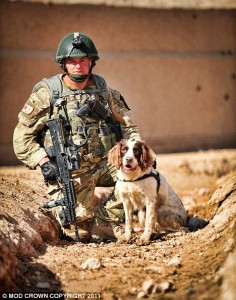Yet another job for springer spaniel sniffer dogs! I think it’s 8 jobs now and still counting. They are amazing dogs – I wish mine would sniff out some cash for me!
Edinburgh Evening News
Cash-hunting sniffer dogs helping to collar criminals
Sniffer dog Roddy at work in Edinburgh Airport
Published on Thursday 16 February 2012 12:10
POLICE today carried out a search operation at Edinburgh Airport with sniffer dogs deployed to track down criminals smuggling cash abroad.
The operation by the UK Border Agency (UKBA) saw specially trained dogs check passengers in the airport’s departure area as they prepared to take flights from 6am today.
The crackdown was mounted in a bid to detect money being taken out of Scotland to avoid tax, or to be hidden in foreign bank accounts.
Around 1800 passengers departing on international flights between 4am and 8am today were checked for cash.
A Lithuanian man flying out to Kaunis was stopped after a dog detected money in his jacket. The man was found to be carrying £2000 and interviewed by officials, but was released after officials determined he was taking the money back to his homeland after working in the UK.
Passengers departing on flights to Amsterdam, Paris, Brussels, Tenerife, Krakow, Prague, Alicante, Budapest, New York and Copenhagen were searched as part of the operation.
Security personnel, assisted by officers from Lothian and Borders Police, separated passengers leaving on domestic and international flights into sections, with the dogs a yellow labrador called Marley and a springer spaniel called Roddy checking the bags and clothing of anyone going abroad.
UKBA officers also checked domestic passengers using a profiling system to identify potential smugglers to be checked by the animals and their handlers for money.
A number of passengers were also stopped with small amounts of cash notes before being allowed to proceed. Colin Fraser, senior officer at UKBA, pledged that the cash spot-checks would be carried out on a very regular basis at the airport to snare criminals.
He added that locations such as Dubai and mainland Spain were popular with criminals taking money abroad.
As well as depositing cash in foreign accounts, criminals also take money abroad to buy drugs or cigarettes to be smuggled back into Britain.
Full Story: Cash Hunting Springer Spaniel
Acknowledgements: grateful thanks to www.scotsman.com

